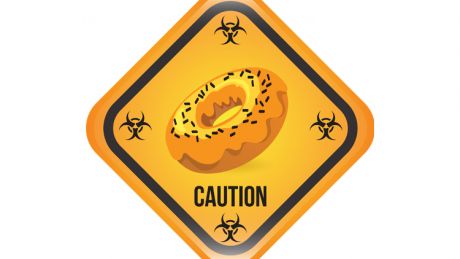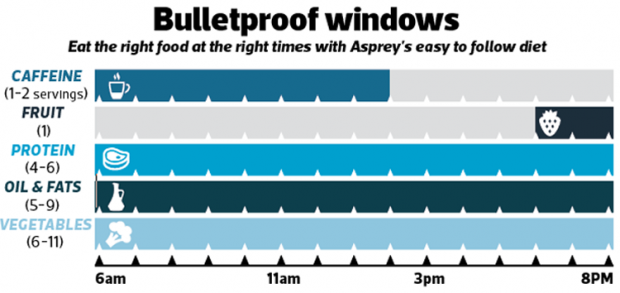How to maintain high energy levels: 3 key factors
The secret to optimum energy levels? It’s getting your RDA of butter and steak, says Bulletproof Diet author Dave Asprey

A lot of diets will get you super-lean or help you pile on muscle, but most of them will also wreck your hormone levels and leave you feeling tired all the time. I want to look good, but I also want to have lots of energy and improve my mental focus and brain function. That’s why I created the Bulletproof Diet, which is governed by the simple rules below, all of which are easy to follow and maintain.
Prioritise healthy fats
If you want to maximise your energy levels, you need to get your macronutrient ratio – the amount of protein, carbs and fat you eat – right. I recommend eating five to nine fist-sized servings of healthy fats a day, four to six servings of protein, six to 11 servings of vegetables and one serving of fruit or starch. This places a lot of emphasis on healthy fats, which should account for 50-70% of your overall calorie intake.
The reason? A diet rich in healthy fats triggers subtle biological processes in the body, telling it that you live in a land of plenty – which it associates with an abundance of fatty foods – and there’s no chance you’ll starve. On a subconscious level this stops you worrying about where your next meal is coming from, and consequently you won’t feel the urge to eat as often. Willpower is a finite resource, and constantly using it to say no to hunger pangs can be an exhausting process.
Sticking to a high-fat diet will reduce the amount of willpower you’re forced to use, which in turn will leave you with more energy and willpower to use elsewhere. Butter from grass-fed cows, fish oil, free-range egg yolks and grass-fed red meat are all great sources of healthy fat.
Avoid toxic foods
Even if you eat a whole-food diet, there’s a good chance you’re not enjoying optimum energy levels. This is because a lot of foods, as well as containing healthy nutrients, also contain toxic, health-sapping anti-nutrients, which – depending on your tolerance – can affect your immune system, energy levels and cognitive function. Peanuts, for example, contain plenty of protein and healthy fats but also trigger inflammation in the body. But it’s processed and trans fat-heavy foods that tend to be high in anti-nutrients.
Everyone’s tolerances are different, but there’s a test you can use to work out which foods disagree with you. Measure your resting heartbeat 30 minutes before eating a certain type of food, and then measure it again 30, 60 and 90 minutes afterwards. If your heartbeat is raised by more than 16bpm at any of the post-feed tests, you know it contains anti-nutrients that you should avoid. If you set aside a couple of hours here and there over a month and work through all the foods you eat regularly, you’ll quickly be able to customise your diet, and you’ll really feel the difference in your concentration and energy levels.
Save carbs till last
I don’t advocate counting calories. Provided you’re eating enough healthy fats and sticking roughly to the daily servings outlined above, all you have to do is eat when you’re hungry and stop when you’re full. The one thing I do recommend is eating your daily serving of carb-heavy fruit or starch in the evening. (For starch, I recommend sweet potatoes, yams, carrots and butternut squash. For fruit, stick to berries, lemons, limes, avocados and coconuts.)
Get the Coach Newsletter
Sign up for workout ideas, training advice, reviews of the latest gear and more.
A lot of diets tell you to stop eating carbs after a certain time of day, but I disagree. Eating carbs in the morning will increase your food cravings all day long, sapping your willpower reserves and tiring you out. Eating them in the evening instead will help you avoid this, plus it’ll boost your serotonin levels to ensure you get a better night’s sleep, which will do wonders for your energy the next day.

For more from Dave Asprey visit bulletproofexec.com
Coach is a health and fitness title. This byline is used for posting sponsored content, book extracts and the like. It is also used as a placeholder for articles published a long time ago when the original author is unclear. You can find out more about this publication and find the contact details of the editorial team on the About Us page.

